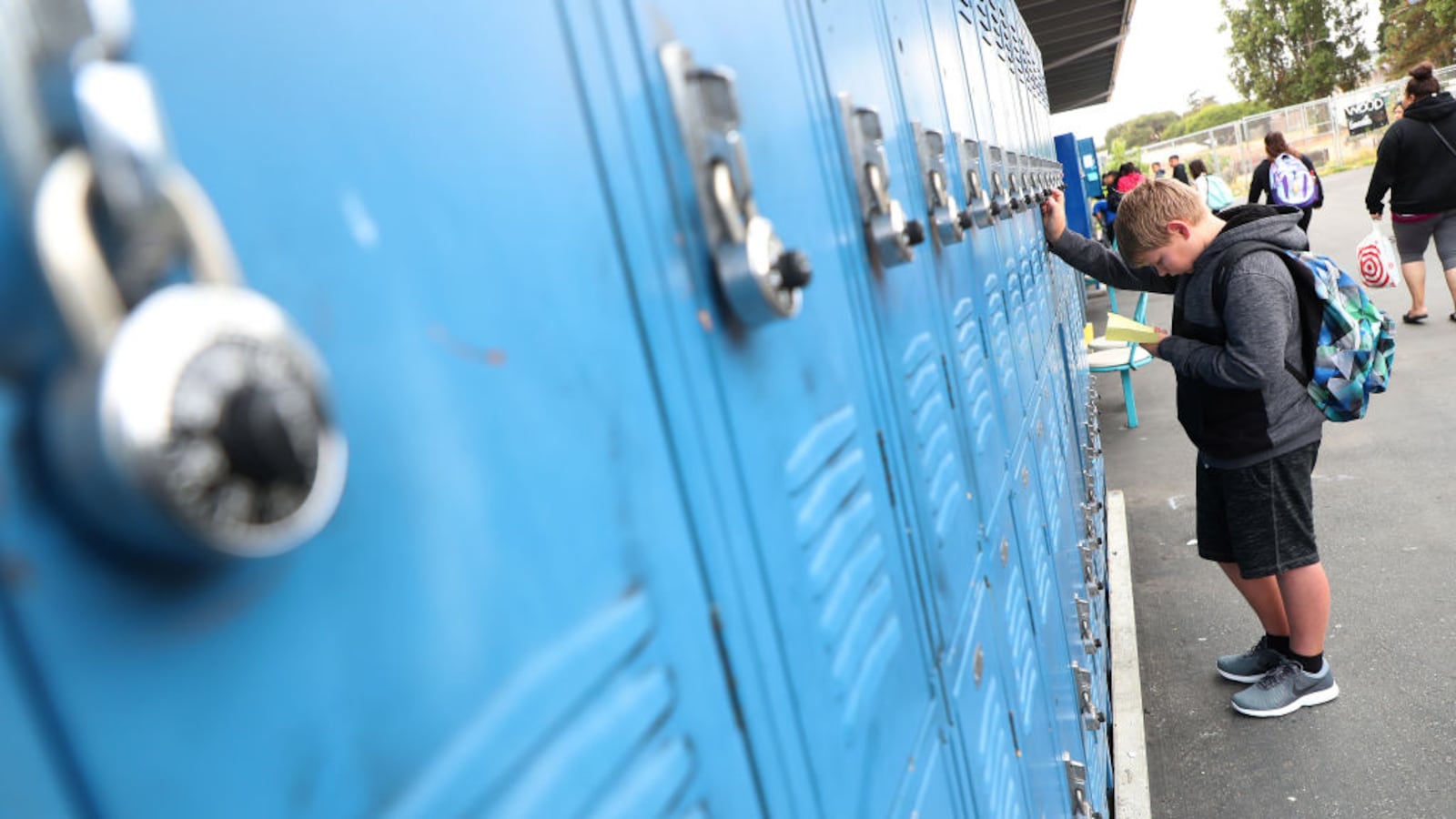I began my teaching career as a Peace Corps volunteer in southern Albania more than 20 years ago. Back then, I was petrified that someone was going to detect that I wasn’t a real teacher, so I spent my time learning the English language inside and out. I was convinced I had to be able to answer every grammar question, talk about every novel, and provide the best word choice at a moment’s notice.

Of course, watching my students interact with each other over the next year showed how much help they needed in areas completely unrelated to my curriculum. They needed help with patience and tolerance, respect and kindness. When I came back to teach in the U.S., those needs were just as pronounced.
In all of the schools I’ve worked at since, we’ve had lessons designed to teach students character. Frankly, students didn’t often take them seriously, and they rarely seemed to result in any change in students.
I began thinking about taking a different approach in my current position as a seventh grade language arts teacher after I stumbled across a study done by researchers at the University of Wisconsin—Madison. They wanted to answer the question, “Can compassion be learned?” They found that, when people practiced an ancient Buddhist technique called compassion training, it increased activity in the part of the brain associated with empathy and understanding of others.
The lead author, Dr. Helen Weng, related it to weight lifting. With repeated practice, she said, you can build up your “compassion muscle.”
Most of the things I’d been doing in my class to teach character, I realized, weren’t really practice. Skits, roleplaying — they weren’t authentic experiences.
That led me to an assignment I called Undercover Agents of Kindness. I had students draw a random classmate’s name out of a bowl, then gave them two weeks to perform an act of kindness for that classmate. After they were done, they completed a mission report where they reflected on how the activity had made them and the other student feel. (The report also helped me be a little more sure that they really did the assignment.) It was an activity I felt could bear fruit in any class, and required very little time to complete.
Some of my students loved the idea, and some of them were not so excited. Some students groaned when they saw whose name they’d drawn — which told me they probably needed this compassion weightlifting more than anyone else. I was shocked to hear that some of them had no idea who the other person was, even after being in class together for months.
A few days after I rolled out the project, I began to see encouraging sticky notes on lockers in the hallway. Batches of homemade cupcakes and bags of leftover Halloween candy made their way onto desks in my classroom, as did origami, inspirational quotes, and hand-drawn portraits.
As the mission reports started trickling in, I read accounts of children studying together, inviting others to sit together at lunch, and helping classmates put football equipment on at practice.
Some of the most heartwarming examples I learned about were a child who recognized that a peer was struggling with frustration and brought him a stress ball. A girl who had never spoken with the person whose name she had drawn discovered that person had a concussion and was unable to go outside for recess, so she brought her some ice cream and kept her company. A student made chocolate chip cookies and brought them to school, not knowing that the recipient was going to get in a fight that day and would be sitting outside the assistant principal’s office in desperate need of some kindness when he received the cookies.
For some students, this assignment was really difficult. Imagine having to do something kind for someone who hasn’t always been kind to you. Think back to when you were 12 years old, and how awkward it was for you to talk with people of the opposite gender.
I put myself in these children’s shoes and offered to help them with their act of kindness by delivering an anonymous gift or note or looking up locker numbers of other students so they could complete their mission as painlessly as possible. For the most part, even students who found this assignment really difficult still managed to find the will to do it.
When I asked students to give me feedback, they acknowledged that it often felt uncomfortable to approach someone they didn’t know well and do something nice for them. However, almost every time, they added that they were proud of themselves for doing it anyway and felt the power in brightening someone else’s day. So I decided to make Agents of Kindness a regular activity with a new name draw each month.
It’s been great to see the things my students have done for each other, the relationships they’ve built, and the enthusiastic response this project has received from so many different places.
Did I succeed in my goal of getting students to be more compassionate? I can’t say for sure. I don’t have my own MRI machine to measure their brain activity. And contrary to what you may have heard, our impact as teachers is not always measurable or immediate.
I did survey my students to see whether they thought it had made a difference. I asked them, “Have you found yourself being more kind to your family since we started Agents of Kindness?” These were some of their responses:
- I’ve become more patient and I’ve also been able to listen to criticism without getting angry
- I have gained the slightest bit more respect for my sister.
- idk it kinda just stayed the same but i didnt want to put no
- No
- I have pushed down my anger towards my mom when she comes to wake me up. I feel that it is working and I am going to keep trying.
From the array of student responses, I think I’d have to say it worked for some of them. In this case, that feels like a win.
I want to be clear that my goal is not to to sell you on Agents of Kindness. I’m not even sure I’m sold on it. About the only thing I am sure about is that my students need me to be more than my curriculum. I’m willing to bet that yours do too.
Justin Parmenter is a seventh-grade language arts teacher at Waddell Language Academy in Charlotte, North Carolina and was a finalist for Charlotte-Mecklenburg Schools teacher of the year in 2016. He blogs at Notes from the Chalkboard. This piece was adapted from a Teacher Talk he gave on Agents of Kindness.
About our First Person series:
First Person is where Chalkbeat features personal essays by educators, students, parents, and others trying to improve public education. Read our submission guidelines here.


